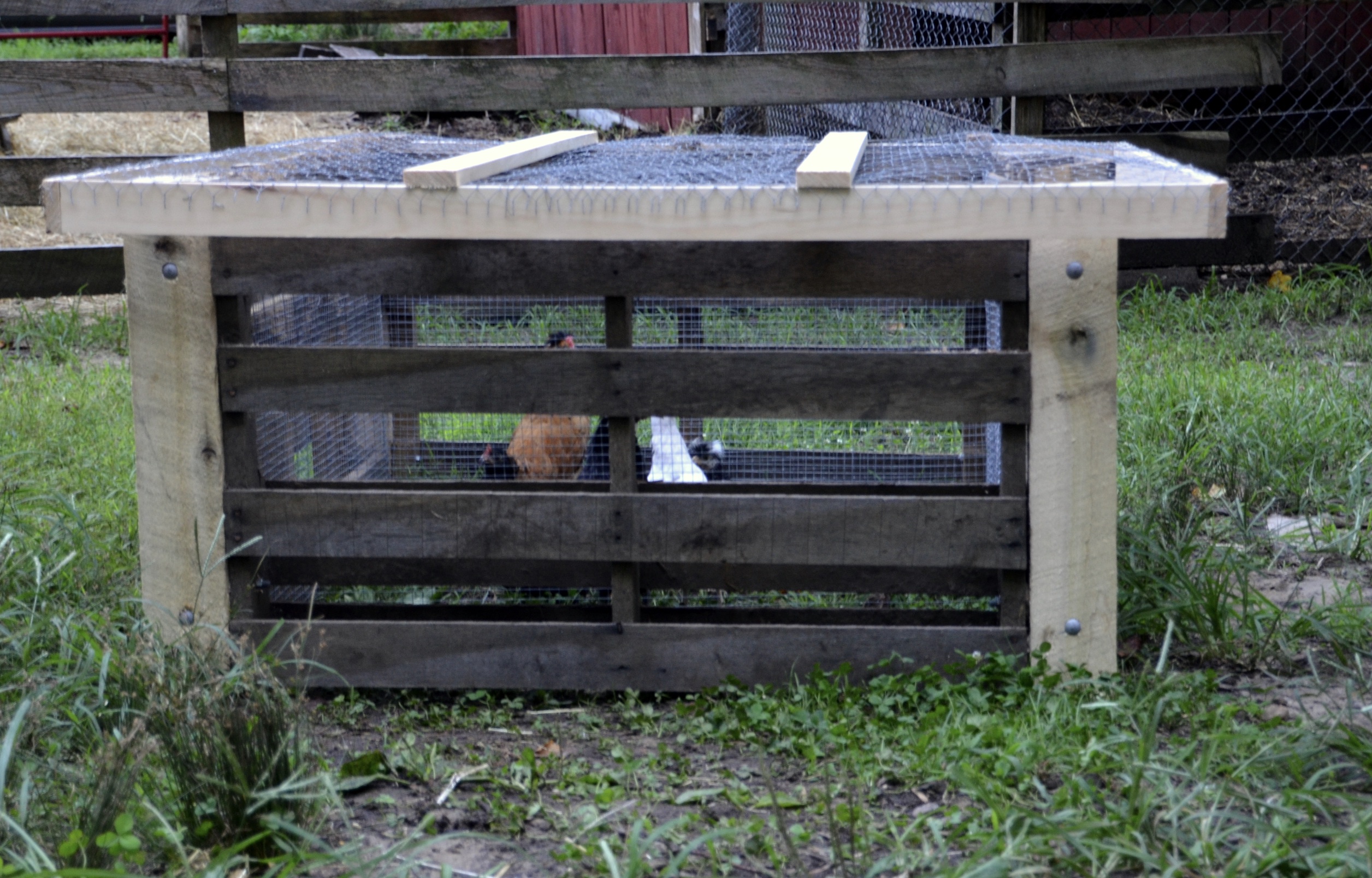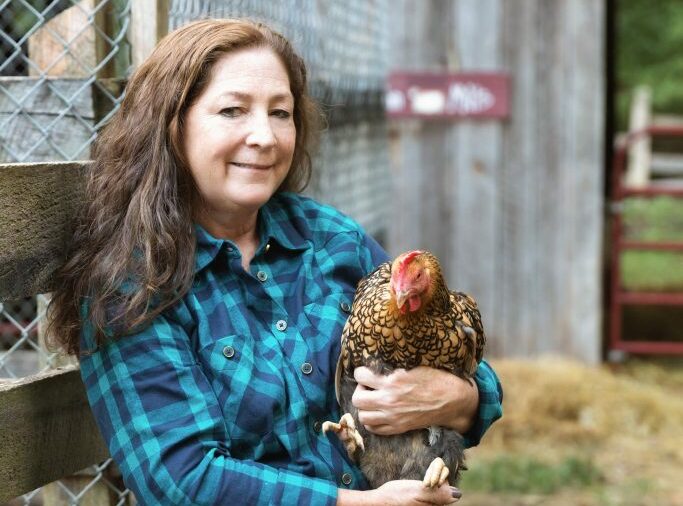Chicken tending naturally lends itself to DIY projects. From the time your brand new chicks walk into your heart, you will be providing for their needs. Though chickens are hardy and self-reliant, when keeping them for egg production, you will want to provide a safe place for them to roost safely at night.
In addition to a coop, your chickens will appreciate well-lined nest boxes, appropriate roosting bars, drinking vessels, food dishes, forage, and access to a safe outdoor space.
Phew! If that sounds like a lot of requirements, trust me when I say that keeping chickens doesn’t have to be expensive. You can incorporate items from extra building supplies, reuse thrift store items, scout out yard sales, and even hunt for curbside treasures!
One of my favorite ways to provide for my livestock is by completing DIY projects around the farm. From living areas to snacks, I have a passion for trying to make or build things myself! Today, I want to share a few of my favorite DIY chicken projects that we have used here on our farm.
DIY Chicken Project: Building a Brooder
When chicks arrive, I am always ready! I make sure their brooder is assembled, clean, warm, and waiting for them to move in. I made my favorite brooder from a very large plastic storage bin. The clear sides allow me to easily view the chicks, which I love.
Begin with the largest clear bin you can find. Mine is 36 inches long by 18 inches wide. Don’t forget the lid!
Next, cut out the center of the lid. Attach a piece of ¼ inch hardware cloth to the top using a drill, bolts, washers, and nuts.
Then, line the bottom of the bin with a rubber shelf liner or paper towels. Don’t use newspapers during the first week or two. The chicks’ legs are too weak, and it can cause them to slip around on a slick surface. I also don’t use shavings the first week.
Brooder Basics
After your DIY brooder is built, there are a few things you should do in preparation for your new arrivals. First, place a brick or some other riser in the bin for the feed and water to sit on. Make sure they are low enough for the chicks to jump onto, yet still raised above the floor. This will keep the water and food cleaner.
If you use a heater like the one shown in the photo, move the food and water near the heat source for the first two weeks. This will encourage the chicks to eat and drink without getting chilled. When using a heat lamp for warmth, hang it over the metal portion of the chick brooder lid. This will avoid melting the plastic top.
With this DIY chicken project ready and prepared, all you have left to do is watch your chicks grow in their safe, easy-to-clean brooder! However, soon they will need to graduate to a larger brooder or grow-out pen. Luckily, I have a plan for that, too!

Moving Chicks out of the Brooder
When our chicks outgrow their DIY brooder, the big move to a new grow out pen is usually decided by the fact that there is more poop than I can keep up with during daily cleanup! The chicks also testing out their tiny wings as they grow, and I like to provide them with a larger and better contained space.
We are able to brood chicks in a secured shed in the barnyard. Our favorite brooder is made from four shipping pallets and four 4 x4 posts that are 4’ tall, as well as a few nuts and bolts and ¼ inch hardware cloth. If you want to put a bottom panel on the grow out brooder, add a 4 x 4 piece of ¼ or ½ inch plywood for the base. Additionally, you might want to purchase extra hardware cloth to cover the brooder and keep the chicks from flying out in a few weeks.
DIY Chicken Project: Grow Out Pen
Begin by installing one post between two pallets, attaching the pallets to the posts using the bolts. Secure with the nuts. Repeat on the other corners.
Attach hardware cloth on the inside of the brooder using a staple gun. This will keep rodents from crawling in, and prohibit the chicks from getting between the slats of the pallet.
Make a secure top by framing the hardware cloth with 1×3 lumber. Use hardware to secure the top to the brooder.
For the bottom, you can set the brooder on the plywood base or attach it permanently, depending on where you are using the structure.
I have found this DIY grow out pen to be extremely versatile for growing a dozen chicks. We have even used it for a hospital pen at times!

DIY Chicken Project: Fruit Treat
Now that your chicks are growing and spreading their wings, you can give them a delicious, fruity, cooling treat!
Cut a small watermelon in half and scoop out the fruit and cut into chunks.
Mix cut up watermelon, kale torn into small pieces, frozen peas, dried fly larvae, black oil sunflower seeds, any other cut up chicken-safe produce.
*Note: almost all fruits and veggies are safe for chickens to eat. I steer clear from giving them onions, raw potatoes, beans, and any nightshade veggies. If the fruit or veggie pieces are large, cut them into smaller bites.
Transfer the mixture back into the watermelon rinds. Place the rind bowls in the freezer and give them to your flock once they are solid.
This DIY chicken project makes a great cooling treat for the flock during a heat wave. Your birds will make short work of the contents and then go on to eat the bowl too!
Other DIY Chicken Projects
Though chickens are not the same as pets we keep in the house or barnyard, but they can be just as fun to keep. Crossing the bridge between farm pets and livestock, chickens provide us with a particularly nutrient rich food when raised properly.
Raising chickens for eggs or meat is a meaningful purpose, but it doesn’t have to be the only joy we receive from these birds. We can provide them with safety, cleanliness, and even some natural foraging fun, and still consider it chicken farming! It doesn’t have to cost an arm and a chicken leg. Using your imagination, you can create an unlimited amount of DIY chicken projects for your flock.
If you like these ideas, check out my book, 50 Do-It-Yourself Projects for Keeping Chickens.

Janet Garman of Timber Creek Farm is an author, fiber artist, and farmer with a love for animals and sustainable living. Janet has a degree in large animal farm management and animal science from the University of Maryland, and helps others learn to raise livestock, chickens, ducks, rabbits, and manage a small farm. Her articles on keeping animals, small farms, and homesteading can be found on many popular websites. Janet is the author 50 Do-it-Yourself Projects for Keeping Chickens, Chickens from Scratch and many books about fiber arts and farming with animals.
Photos courtesy of Janet Garman.

